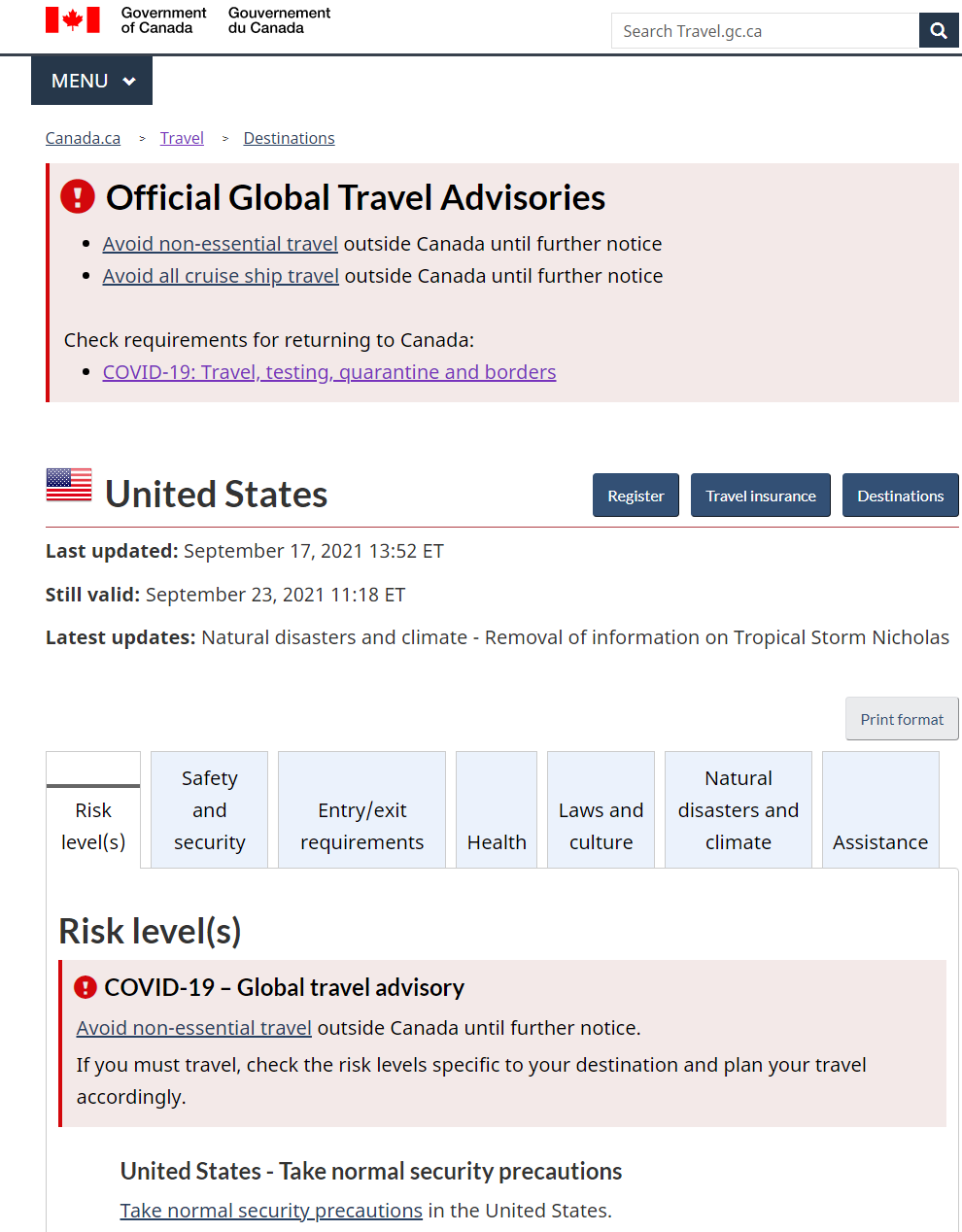Understanding the Current Canada-U.S. Border
There has been a lot of confusion on who can cross the Canada-United States border, seeing as each country has their own respective rules in place. Today, we will try to break down the highlights of each side.
Entering Canada
For entry into Canada, we have covered this extensively. Basically, people travelling from the United States (U.S.) into Canada can now skip much of the quarantine process if the fulfil certain conditions. Here is a quick recap of the requirements:
- be eligible to enter Canada (i.e. an American citizen and permanent resident of the U.S., who currently reside in and will be travelling from the U.S., and who qualify as fully vaccinated)
- have no signs or symptoms of COVID-19
- have received the full series of an accepted COVID-19 vaccine or a combination of accepted vaccines
- have received the last dose at least 14 days prior to the day when entering Canada
- upload proof of vaccination to ArriveCAN
- (all travellers 5 years and older) provide negative test result 72 hours prior to entering Canada by land or 72 hours prior to boarding a flight departing to Canada
As you will see, this is a much more lenient travel restriction than for Canadians entering the U.S.
Entering the United States
First of all, on the departure side, note that the Canadian government currently has a travel advisory in place, whereby Canadians should avoid non-essential travel outside of Canad until further notice. See the screenshot below:

Conversely, on the arrival side, the U.S. has broken down into essential and non-essential travel, which we will cover later on. First off, let’s discuss the requirements when arriving into the U.S.
Negative test results
When entering the U.S., air travellers must provide a negative test result no more than 3 days before boarding their flight (will be confirmed by the airline). Otherwise, they will need to be prepared to show documentation of recovery. However, land crossing do not have such the testing requirement.
U.S. citizens and residents
Any U.S. citizens (including dual citizens), lawful permanent residents, and individuals with valid travel documents can always return to the U.S.
Non-essential travel
Currently, there are travel restrictions for non-essential travel through land, commuter rail and ferry border crossings. However, air, rail and sea travel are less restrictive as the border crossings.
Non-essential travel includes travel that is considered tourism or recreational (e.g. sightseeing, gambling, attending cultural events) in nature.
Essential travel
While essential travel continues to be free flowing between the two countries, regardless of method of travel.
Essential travel includes business travel (to work in the U.S., as well as diplomatic, governmental and military related), critical infrastructure support, economic services, health (e.g. immediate medical care), safety, security, study (e.g. attending educational institutions), trade/supply chains (e.g. truck drivers supporting cargo) is permitted.
Final Thoughts
There you have it, basically, if you are willing to fly, there are very little resistance when entering the U.S. as a Canadian. When we break it down further, they are really just restricting road trips to the U.S.
I just hope to see the borders in either direction open up more freely soon!

For about 18 months, it was the reverse. Canada has much tougher on Americans.
Both countries should make it easier. All travel permitted if vaccinated and wear N95 mask. No testing or other requirements. Spread of Covid is from domestic sources not vaccinated foreigners wearing N95 masks with few exceptions.
Good observation derek, thanks for sharing your thoughts~